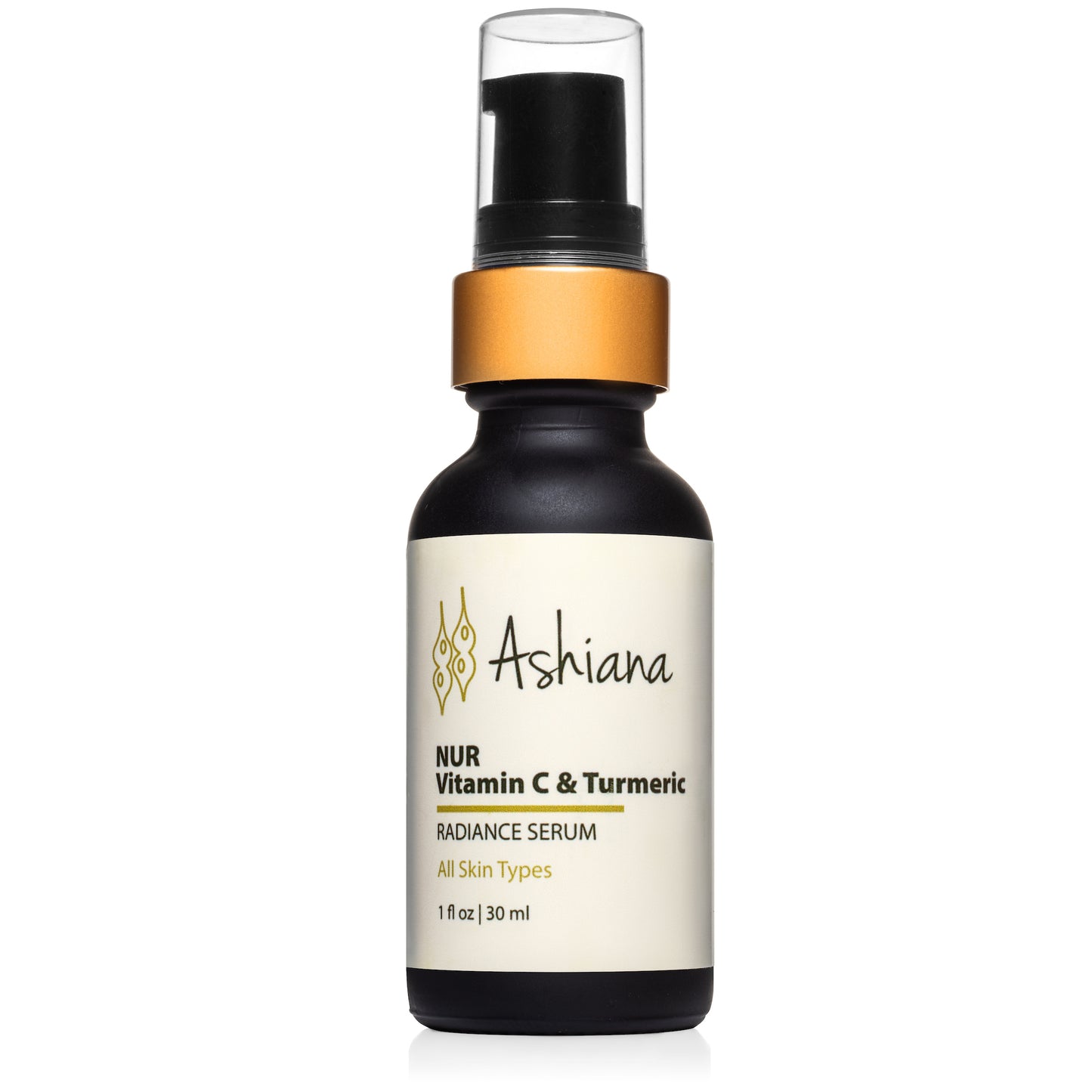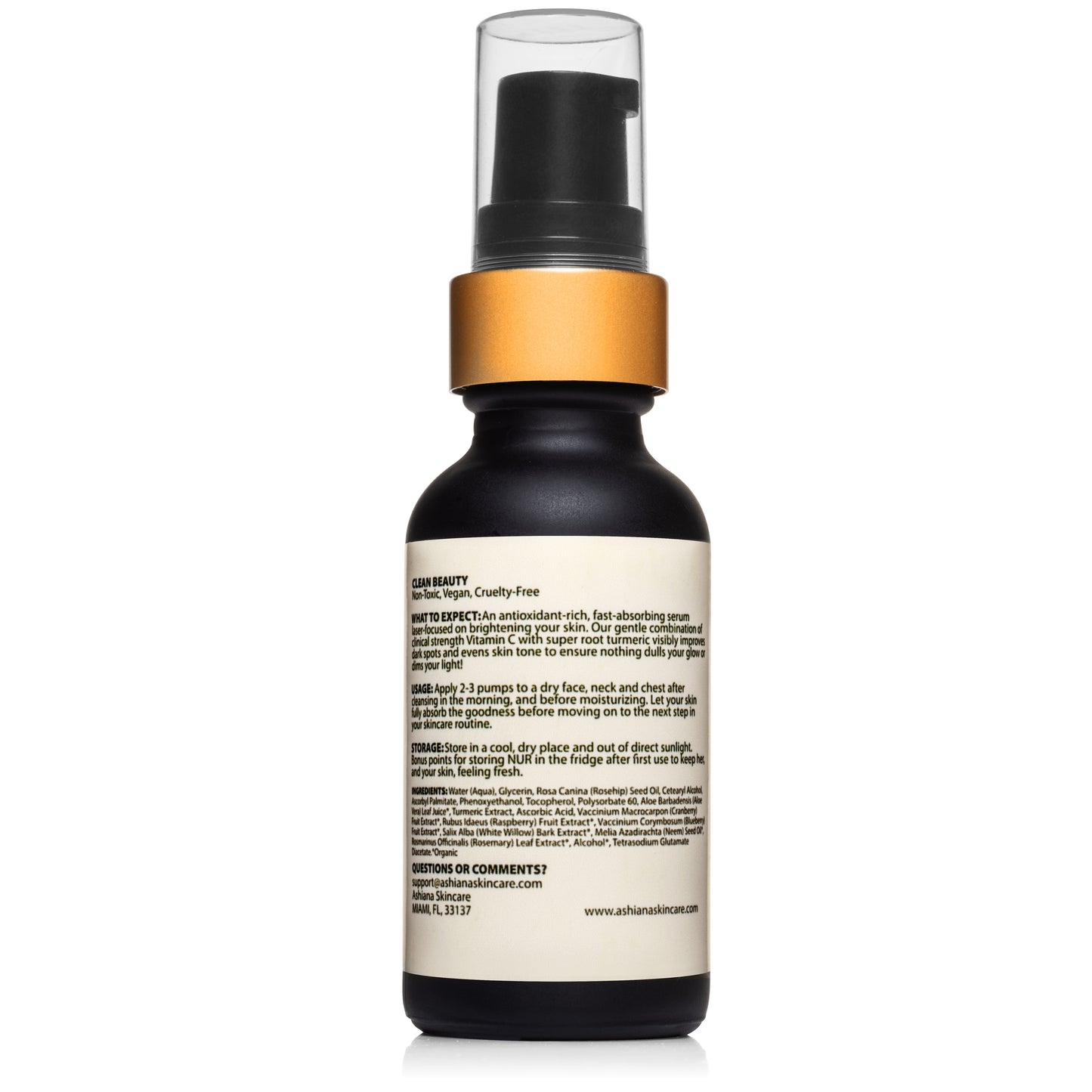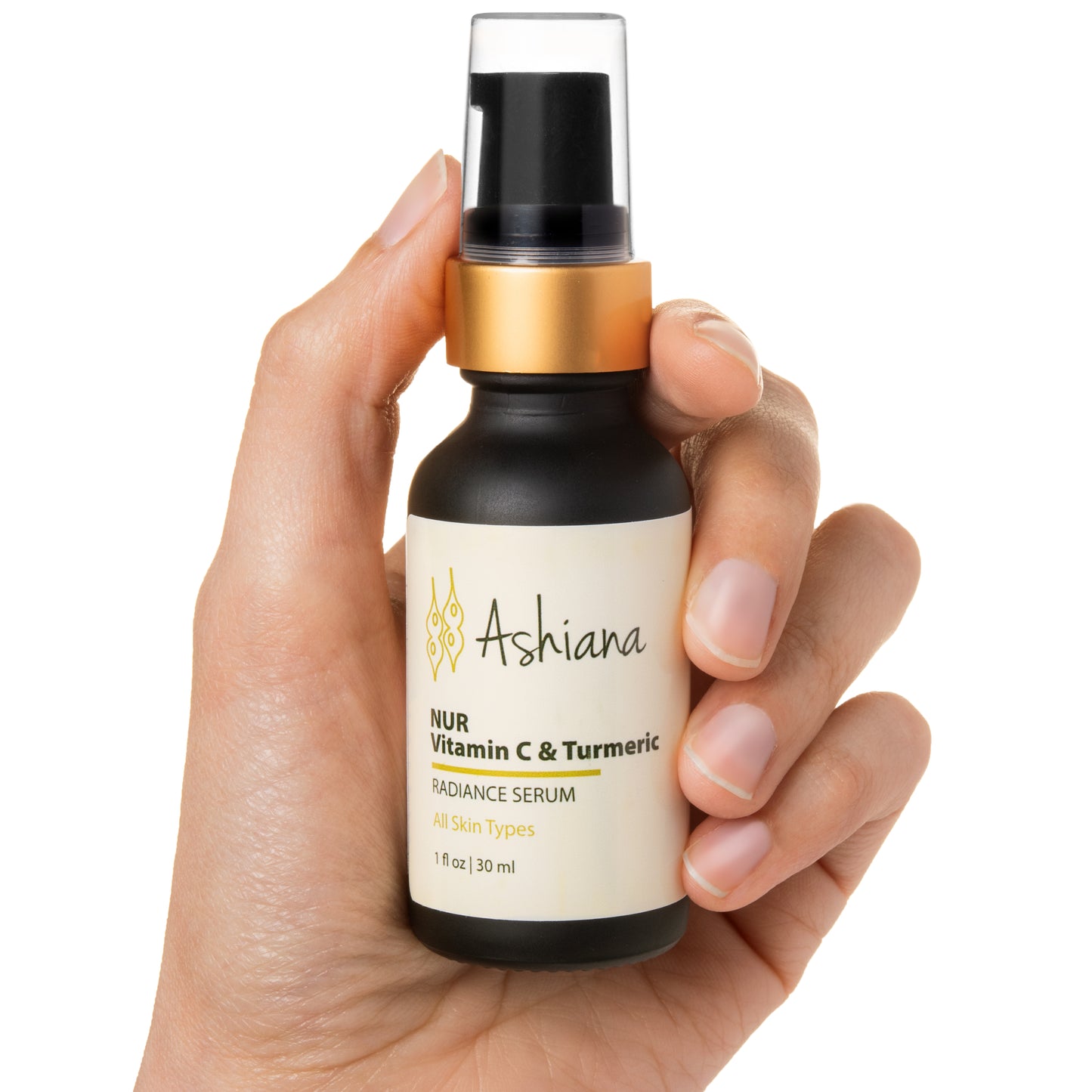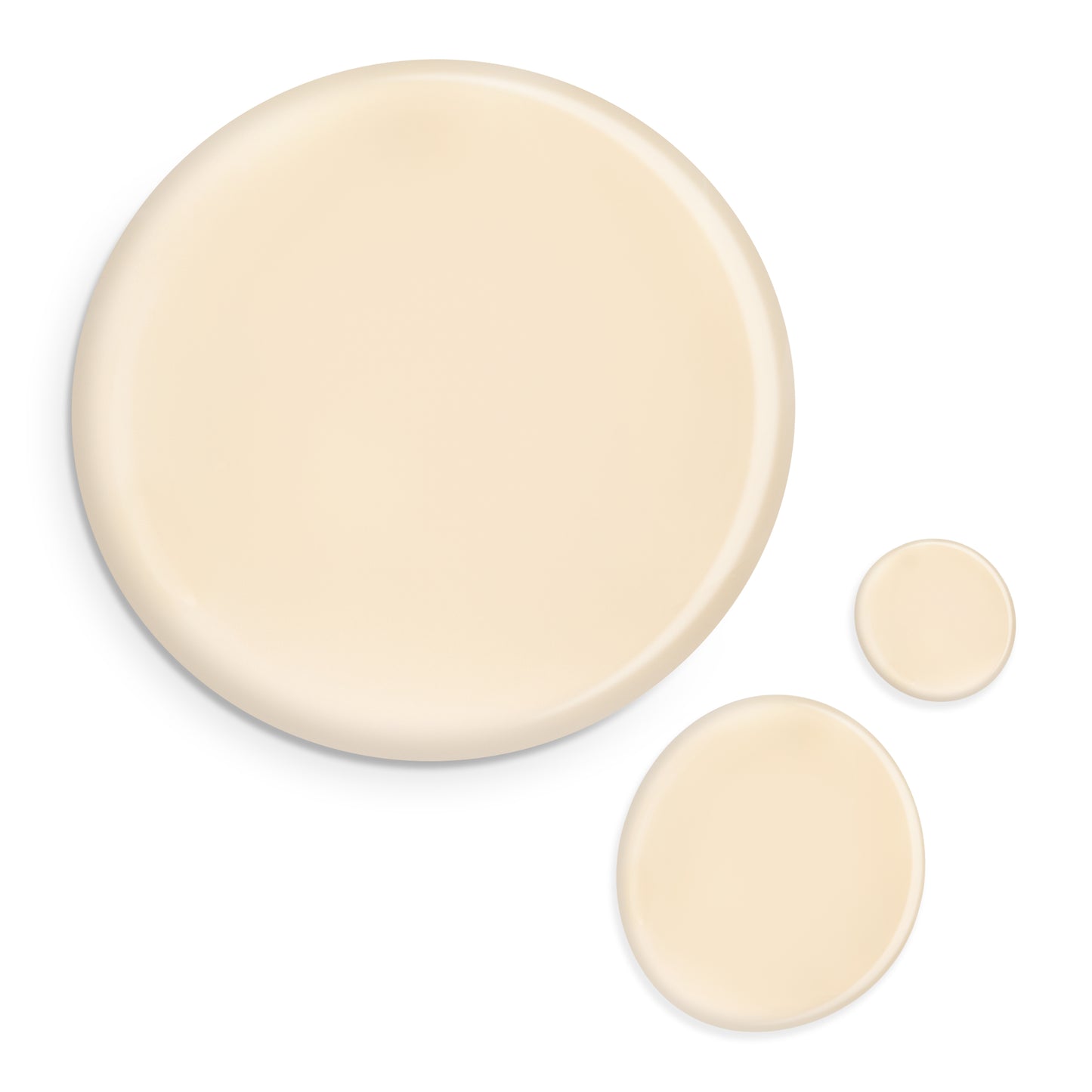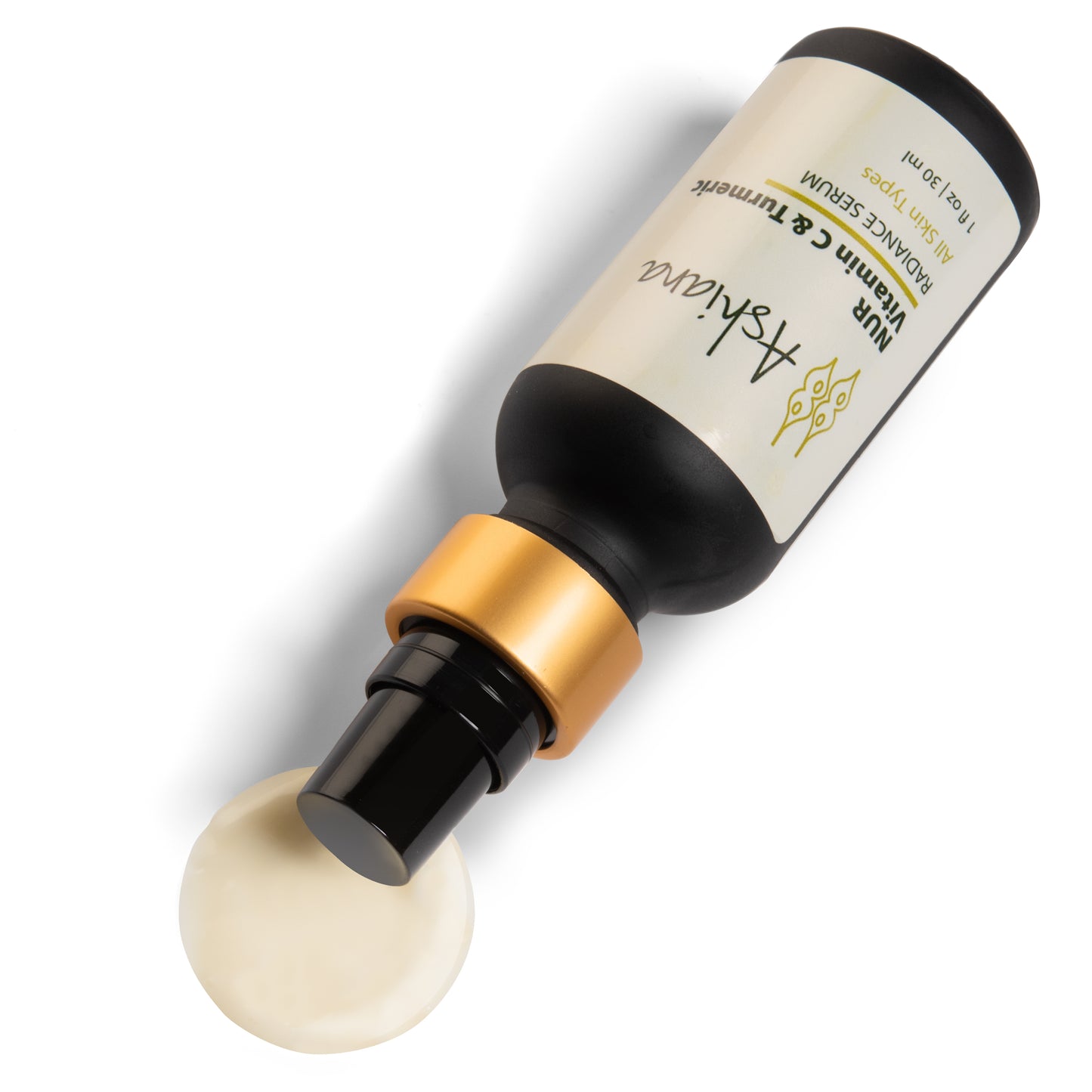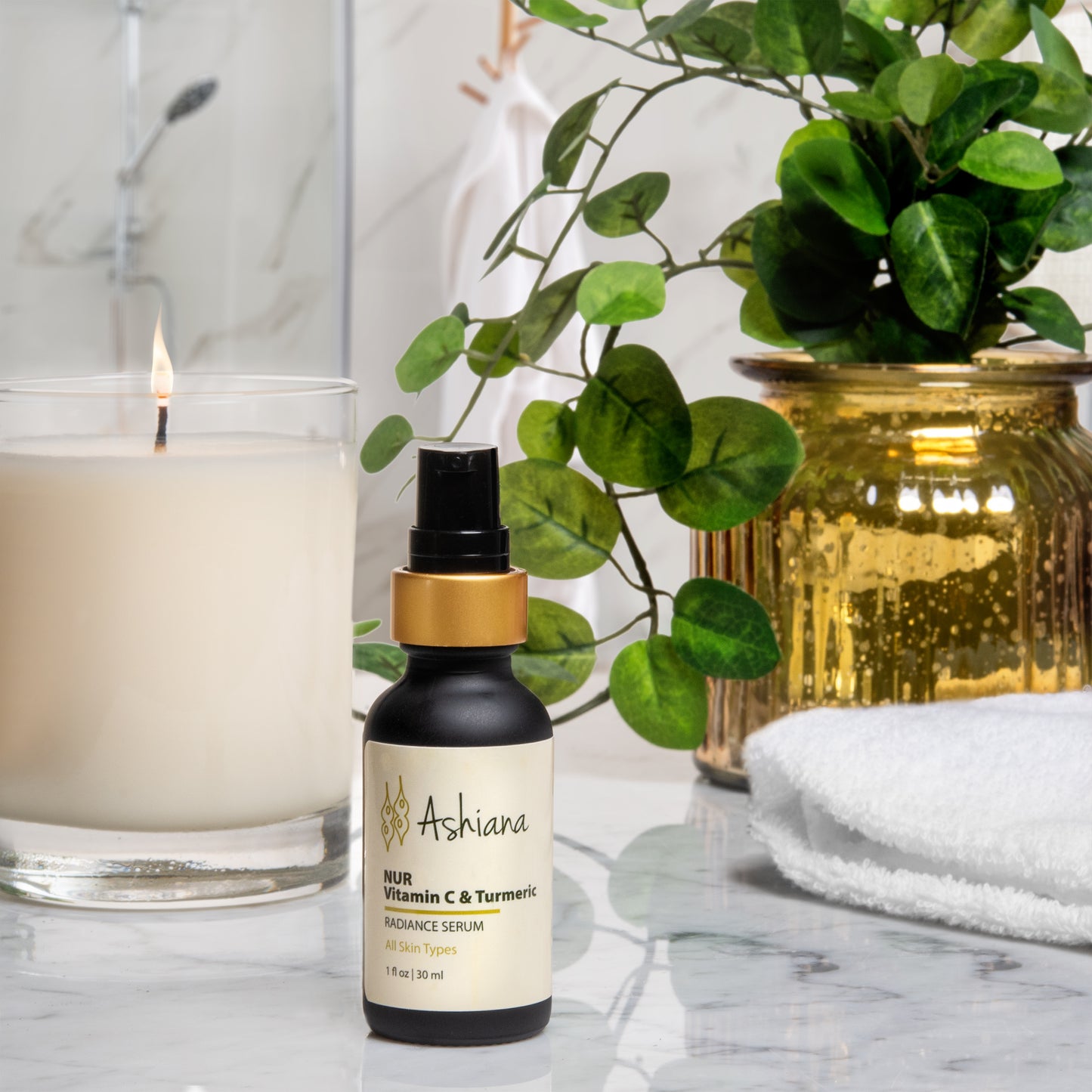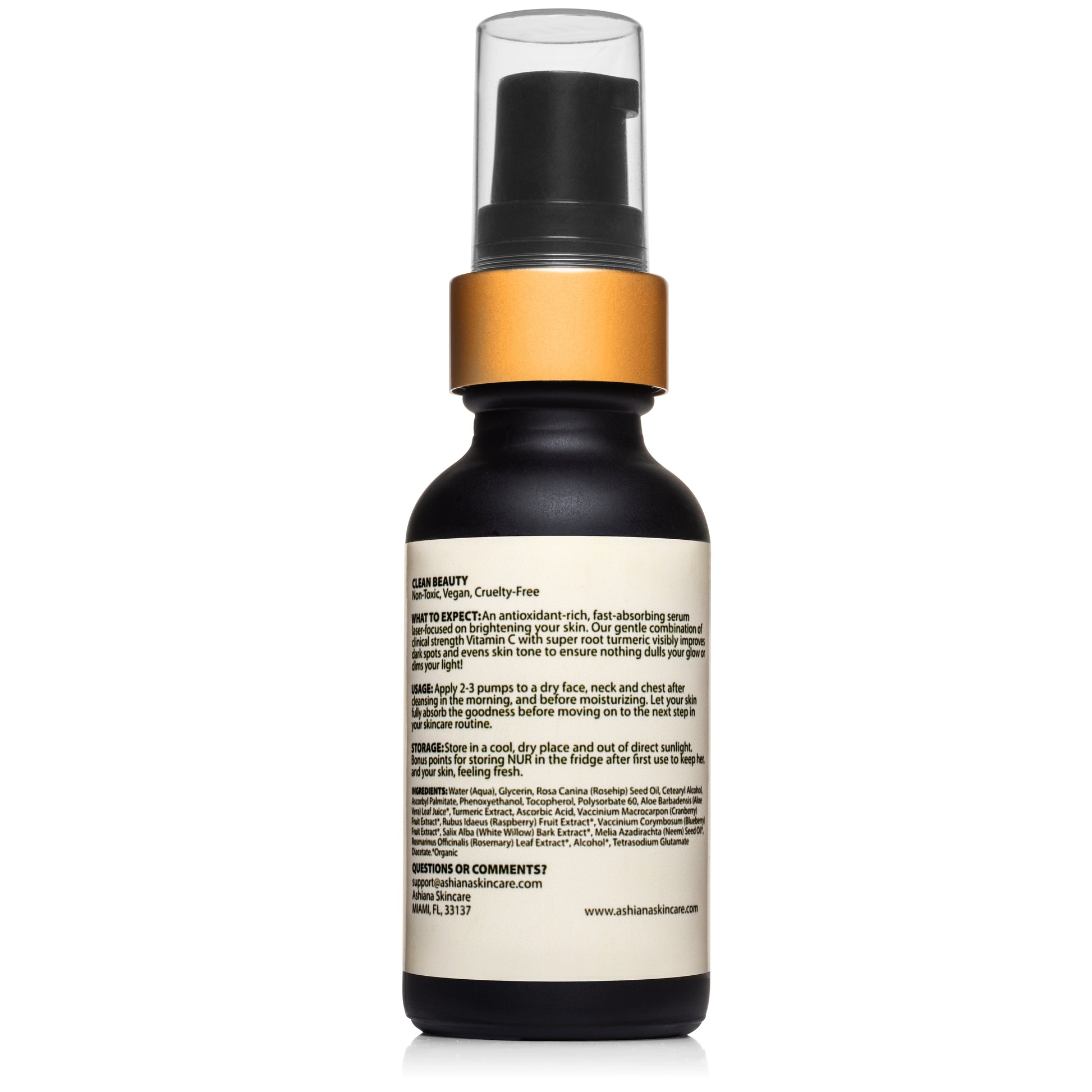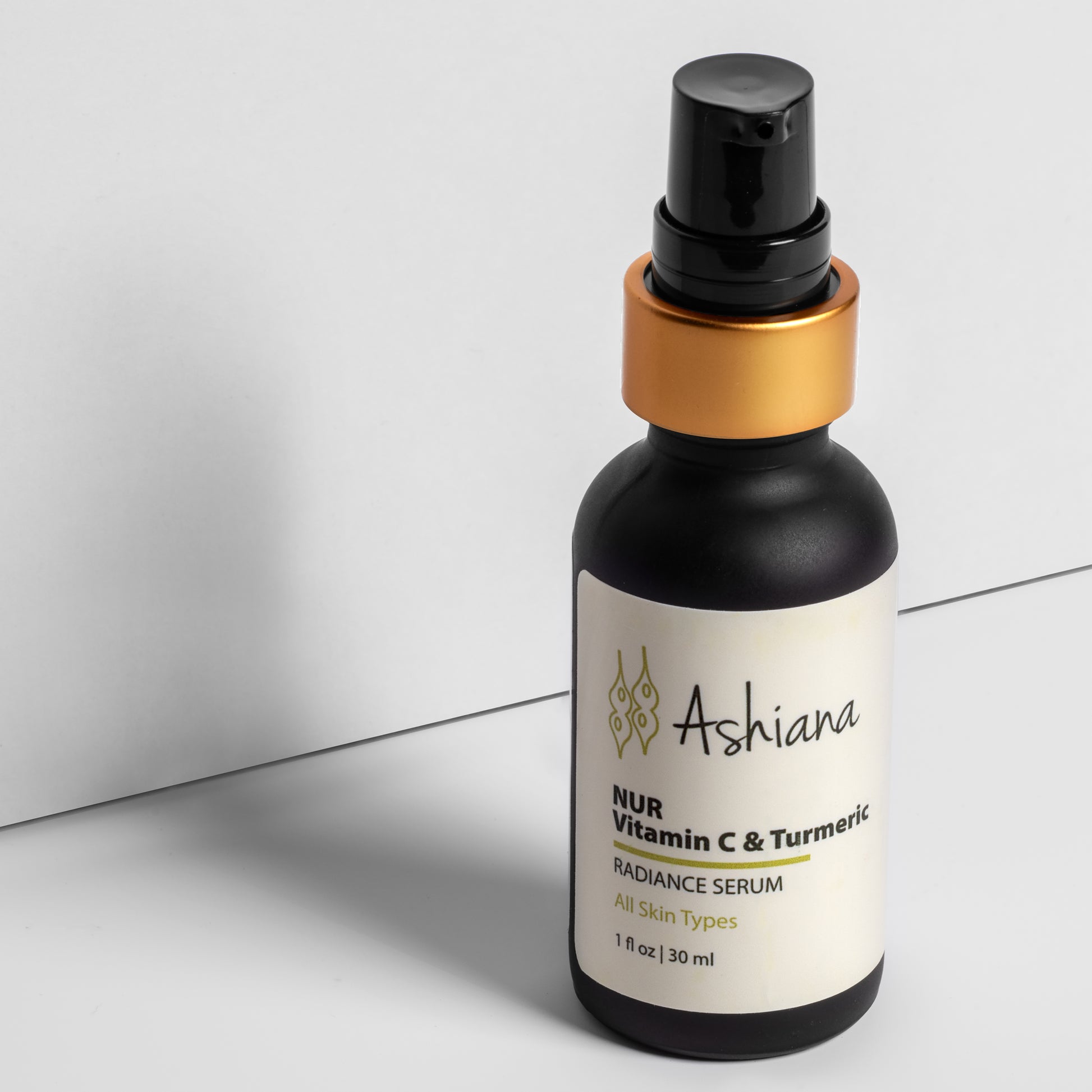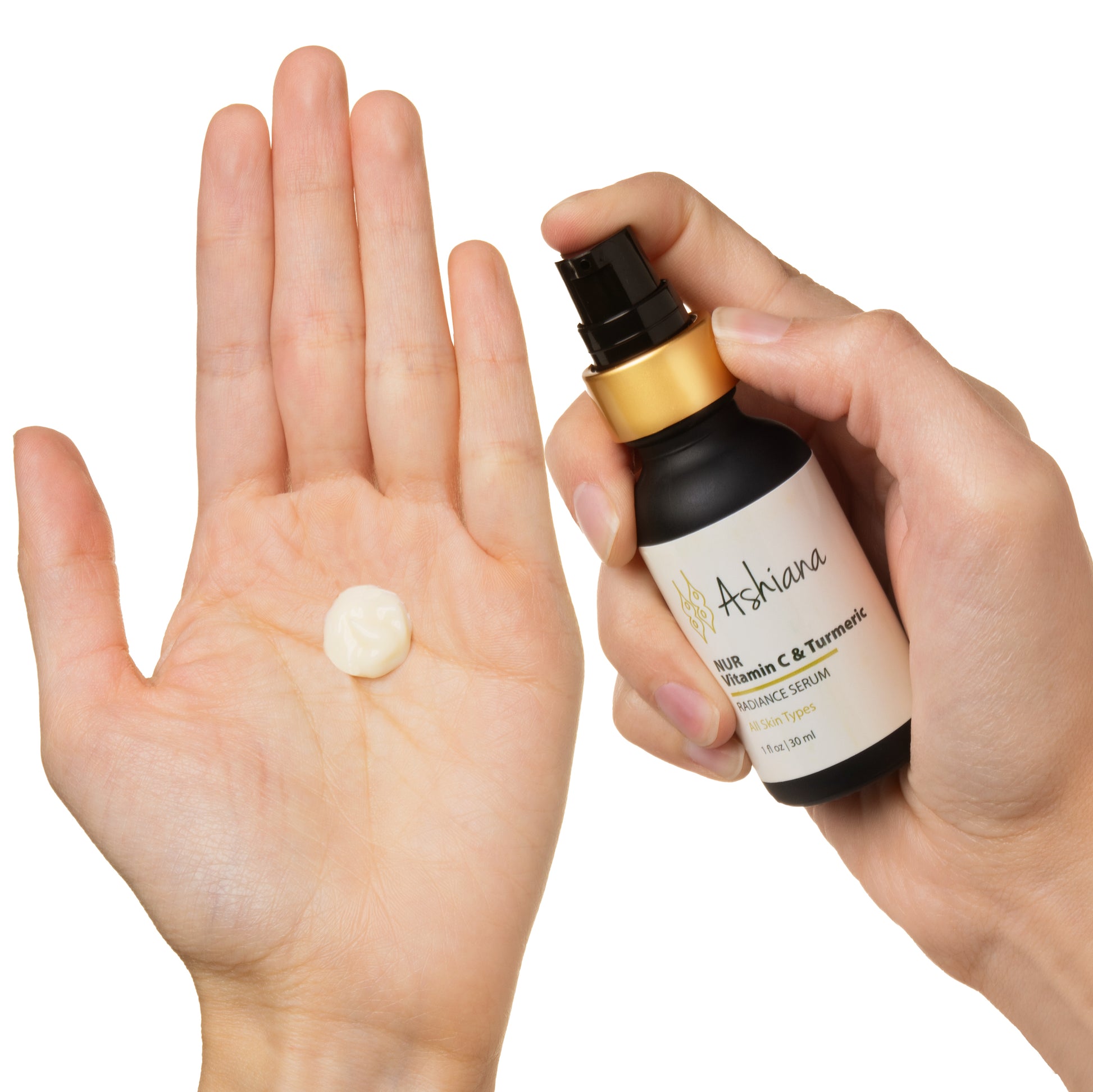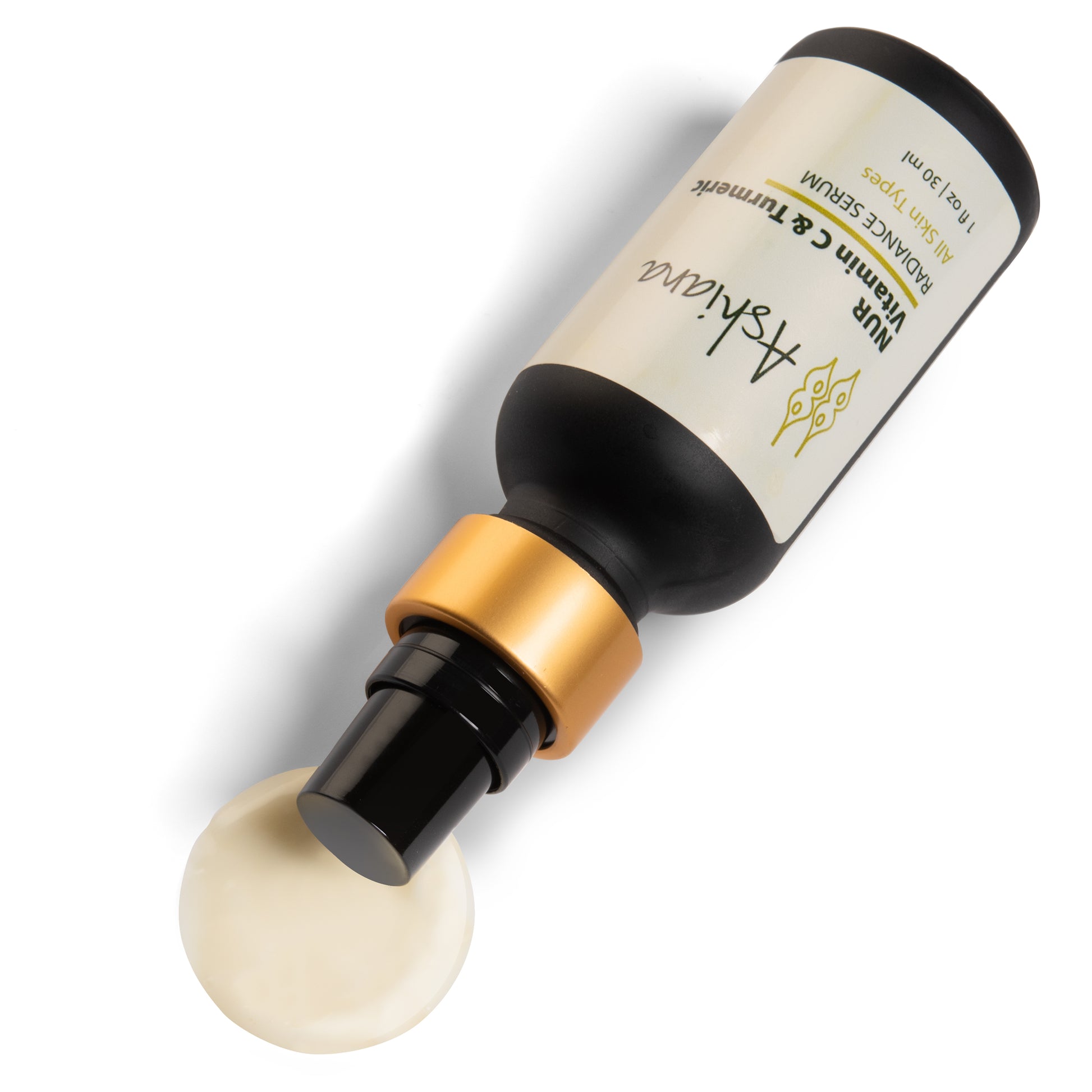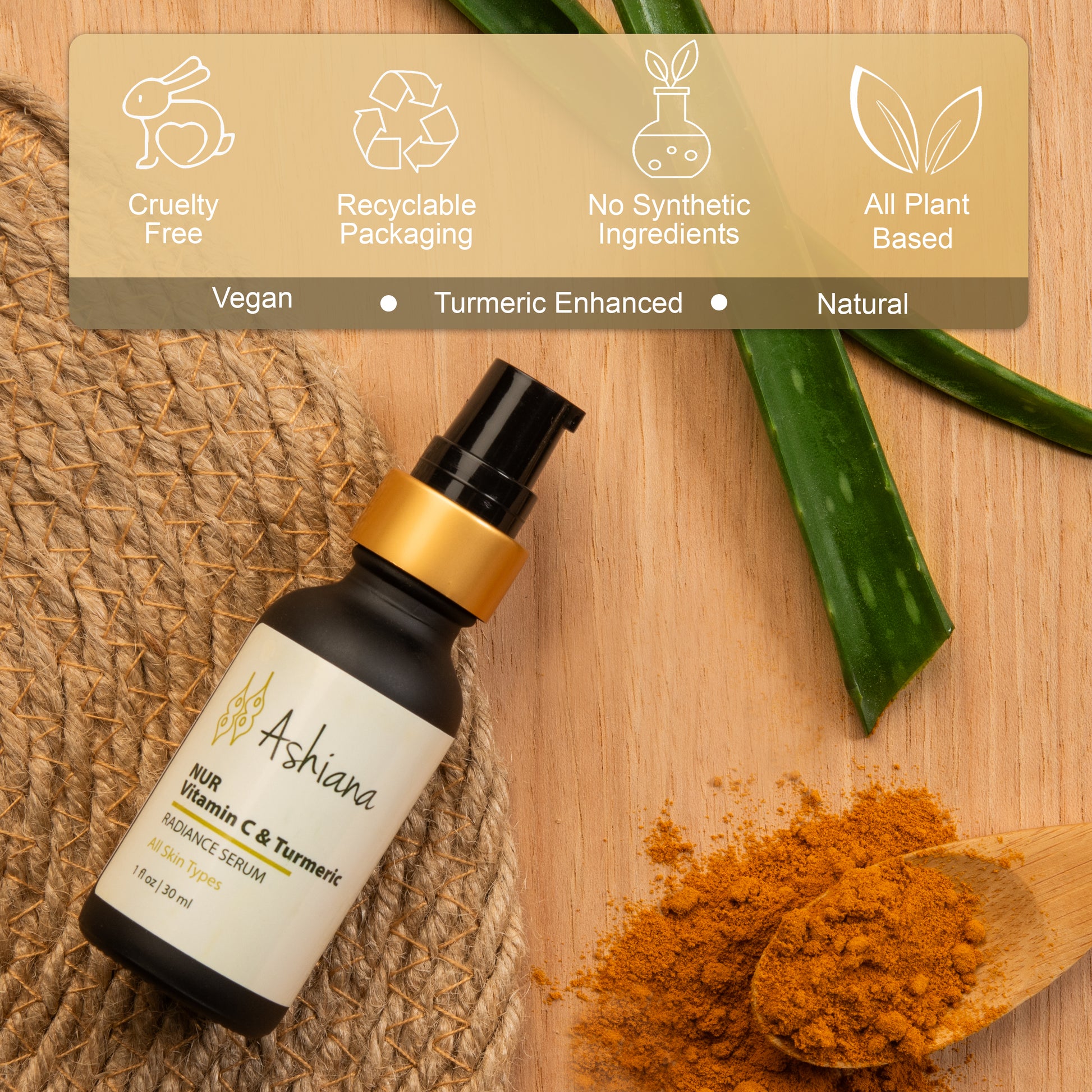Nur - Vitamin C and Turmeric Serum
Couldn't load pickup availability
Ingredients
Water (Aqua), Glycerin, Rosa Canina (Rosehip) Seed Oil, Cetearyl Alcohol, Ascorbyl Palmitate, Phenoxyethanol, Tocopherol, Polysorbate 60, Turmeric, Aloe Barbadensis (Aloe Vera) Leaf Juice*, Ascorbic Acid, Vaccinium Macrocarpon (Cranberry) Fruit Extract*, Rubus Idaeus (Raspberry) Fruit Extract*, Vaccinium Corymbosum (Blueberry) Fruit Extract*, Salix Alba (White Willow) Bark Extract*, Melia Azadirachta (Neem) Seed Oil*, Rosmarinus Officinalis (Rosemary) Leaf Extract*, Alcohol*, Tetrasodium Glutamate Diacetate.*Organic
The origin stories of turmeric and Vitamin C, and their journey into becoming key ingredients in face serums, involve a blend of ancient traditions and modern scientific advancements.
Turmeric:
Ancient Use: Turmeric has its roots in ancient India and Southeast Asia. It has been a staple in Ayurvedic medicine for thousands of years, valued for its anti-inflammatory and healing properties. Traditionally, it was used in paste form for skin conditions, to enhance complexion, and as an antiseptic.
Cultural and Medicinal Significance: In cultures across India and Southeast Asia, turmeric has been revered not just as a spice but also for its medicinal properties. It has been used in rituals, food, and as a remedy for various ailments.
Modern Adaptation: The transition of turmeric from traditional medicine to modern skincare is a result of scientific research validating its benefits. Studies identified curcumin, the active compound in turmeric, as having potent antioxidant and anti-inflammatory effects beneficial for skin health.
Vitamin C:
Historical Recognition: Vitamin C has been known for centuries, primarily for its role in preventing scurvy among sailors during long sea voyages. Its importance for skin health, however, was not immediately recognized.
Discovery and Synthesis: The actual isolation of Vitamin C occurred in the early 20th century. Ascorbic acid was first synthesized in 1933, making it widely available.
Skincare Revolution: Its introduction into skincare products is a more recent development. Researchers found that Vitamin C could promote collagen production, protect against sun damage, and improve skin texture and tone. This led to its incorporation in serums and other topical products.
Integration in Face Serums:
Combining Traditions and Science: The use of these ingredients in face serums is a perfect example of how ancient remedies and modern science can merge. The antioxidant and anti-inflammatory properties of both ingredients are beneficial in addressing issues like aging, hyperpigmentation, and skin texture.
Formulation Challenges: Incorporating Vitamin C and turmeric into serums involves overcoming stability and absorption challenges. Vitamin C is notoriously unstable and can degrade in presence of light and air. Turmeric’s challenge lies in its coloration and ensuring it doesn’t stain the skin. Advanced formulation techniques have allowed for stable, effective serums that harness the full potential of these ingredients.
Targeted Skin Benefits: In serums, these ingredients work synergistically to provide brightening, anti-aging, and protective benefits. Vitamin C works to even out skin tone and boost collagen production, while turmeric's anti-inflammatory properties help soothe the skin and reduce redness.
Conclusion
The story of turmeric and Vitamin C in skincare is a fascinating journey from ancient remedies to modern-day cosmetic innovation, reflecting the ongoing exploration and appreciation of natural ingredients in enhancing skin health.
